Discover 20 hidden attractions, cool sights, and unusual things to do in Lancaster (United Kingdom). Don't miss out on these must-see attractions: Ashton Memorial, Lancaster Castle, and Lancaster Cathedral. Also, be sure to include Lancaster Priory in your itinerary.
Below, you can find the list of the most amazing places you should visit in Lancaster (England).
Table of Contents
Ashton Memorial
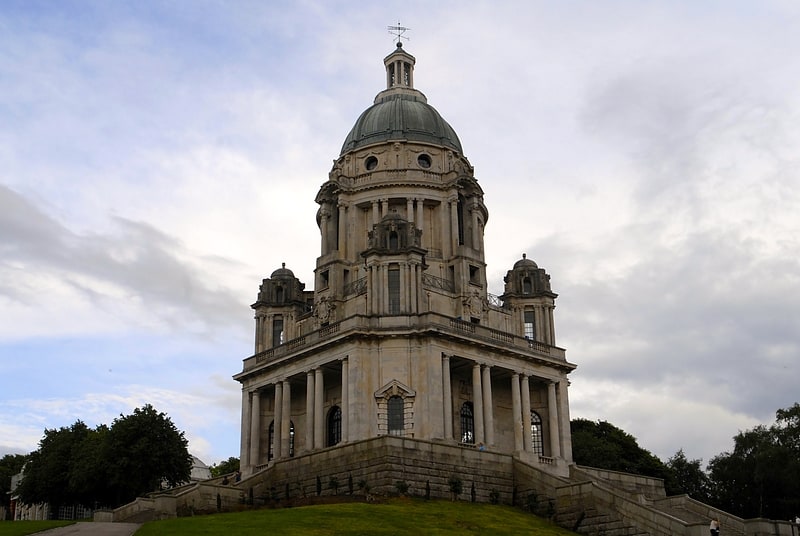
Folly in Lancaster, England. The Ashton Memorial is a folly in Williamson Park, Lancaster, Lancashire, England built between 1907 and 1909 by the millionaire industrialist Lord Ashton in memory of his second wife, Jessy, at a cost of £87,000.[1]
Address: Quernmore Road, Lancaster
Lancaster Castle

Medieval castle in Lancaster, England. Lancaster Castle is a medieval castle in Lancaster in the English county of Lancashire. Its early history is unclear, but may have been founded in the 11th century on the site of a Roman fort overlooking a crossing of the River Lune. In 1164, the Honour of Lancaster, including the castle, came under royal control. In 1322 and 1389 the Scots invaded England, progressing as far as Lancaster and damaging the castle. It was not to see military action again until the English Civil War. The castle was first used as a prison in 1196 although this aspect became more important during the English Civil War. The castle buildings are owned by the British sovereign as Duke of Lancaster; part of the structure is used to host sittings of the Crown Court.
Until 2011 the majority of the buildings were leased to the Ministry of Justice as Her Majesty's Prison Lancaster, after which the castle was returned to the Duchy's ownership. The castle is now open to the public seven days a week and is undergoing a large-scale refurbishment. There is a large sweeping public piazza, allowing access to the cloistered area, renovated in 2019. A new section of the café has been built, against the old outer curtain wall, which was reduced in height to afford views of the neighbouring Lancaster Priory. This is the first 21st-century addition to the castle. Another renovated building adjoining the café is leased to Lancaster University as a campus in the city with small conference facilities.[2]
Address: Castle Parade, LA1 1YJ Lancaster
Lancaster Cathedral
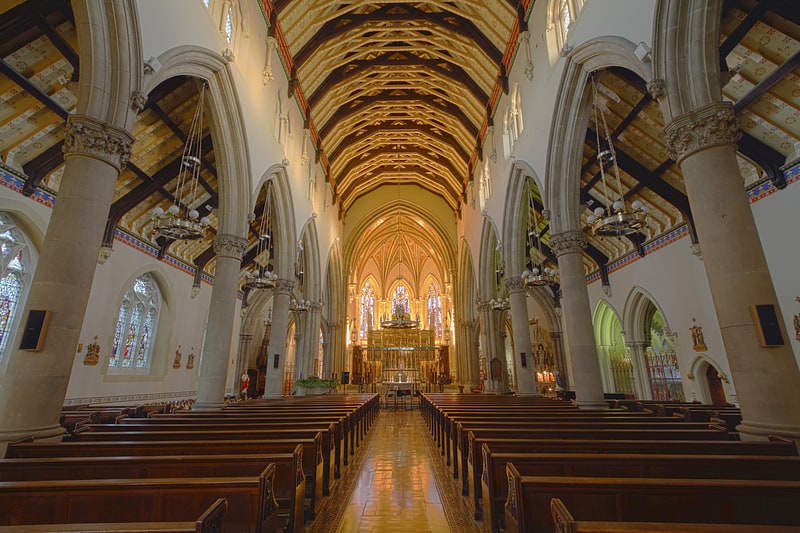
Catholic cathedral for services and events. Lancaster Cathedral, also known as The Cathedral Church of St Peter and Saint Peter's Cathedral, is a Roman Catholic cathedral in Lancaster, Lancashire, England. It was a Roman Catholic parish church until 1924, when it was elevated to the status of a cathedral. It started as a mission church in 1798, and the present church was built on a different site in 1857–59. It was designed by E. G. Paley in the Gothic Revival style and is a grade II* listed building. In 1901 a baptistry was added by Austin and Paley, and the east end was reordered in 1995 by Francis Roberts. The cathedral is in active use, arranging services, concerts and other events, and is open to visitors.[3]
Address: Balmoral Rd, LA1 3BT Lancaster
Lancaster Priory
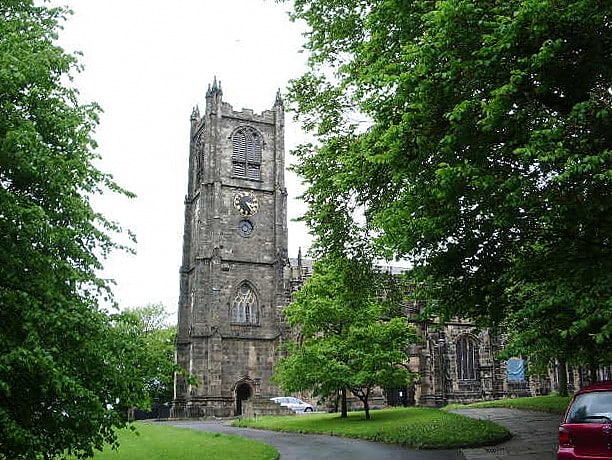
Church in Lancaster, England. Lancaster Priory, formally the Priory Church of St Mary, is the Church of England parish church of the city of Lancaster, Lancashire, England. It is located near Lancaster Castle and since 1953 has been designated a Grade I listed building. It is in the deanery of Lancaster, the archdeaconry of Lancaster and the Diocese of Blackburn. Its benefice is combined with that of St John and St Anne.[4]
Address: Priory Close, LA1 1YZ Lancaster
Judges' Lodgings
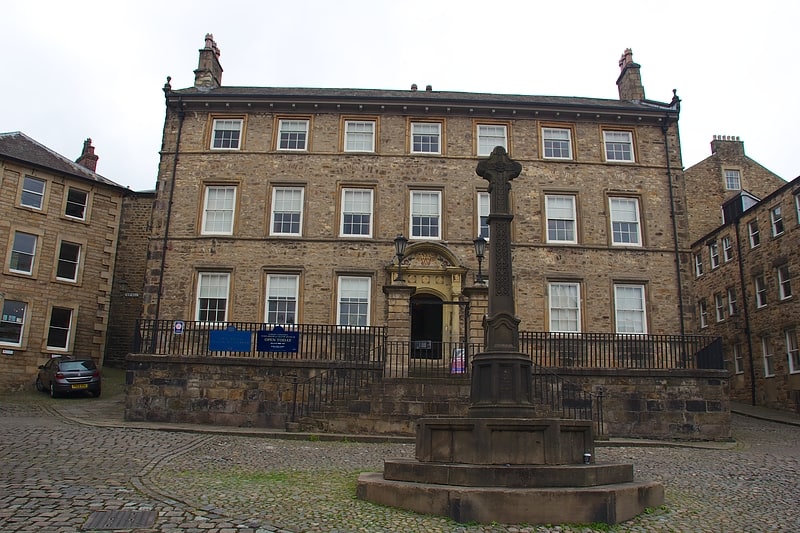
Museum in Lancaster, England. The Judges' Lodgings, formerly a town house and now a museum, is located between Church Street and Castle Hill, Lancaster, Lancashire, England. It is recorded in the National Heritage List for England as a designated Grade I listed building. The building is the oldest existing town house in Lancaster, and was also the first house in Lancaster to have shutters. It was used by judges when they attended the sessions of the Assize Court.
Use of the house by visiting judges ended in 1975, and the building was converted into a museum; featuring a museum of childhood, and the Gillow furniture collection. The future of the museum was put in doubt, following an announcement from Lancashire County Council that it would be closed permanently. Closure was initially proposed to take place on 31 March 2016, but it was deferred. In April 2018 it was announced the museum would open to the general public between Easter and the end of October 2019.[5]
Address: 15 Castle Hill, LA1 1YS Lancaster
Lancaster Maritime Museum
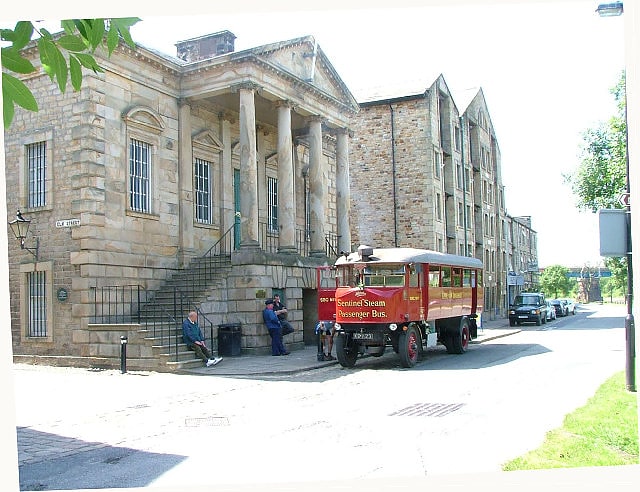
The Custom House, Lancaster is a grade II* listed building located on St Georges Quay, Lancaster, Lancashire, England. The architect was Richard Gillow of the Gillow furniture making family. Designed in 1764 for the Port Commissioners, it was used for its original purpose until 1882 when the Customs were transferred to Barrow-in-Furness.[6]
Address: Lancaster, St George's Quay, Lancaster
Queen Victoria Memorial

Tourist attraction in Lancaster, England. The Queen Victoria Memorial in Lancaster, Lancashire, England, is a Grade II* listed building. It stands in the centre of Dalton Square, Lancaster facing Lancaster Town Hall. It was erected in 1906, being commissioned and paid for by James Williamson, 1st Baron Ashton.
The monument was designed by Herbert Hampton (1862–1929) a prolific sculptor and stone carver who also designed the exterior of the Ashton Memorial in Lancaster[7]
Lune Aqueduct
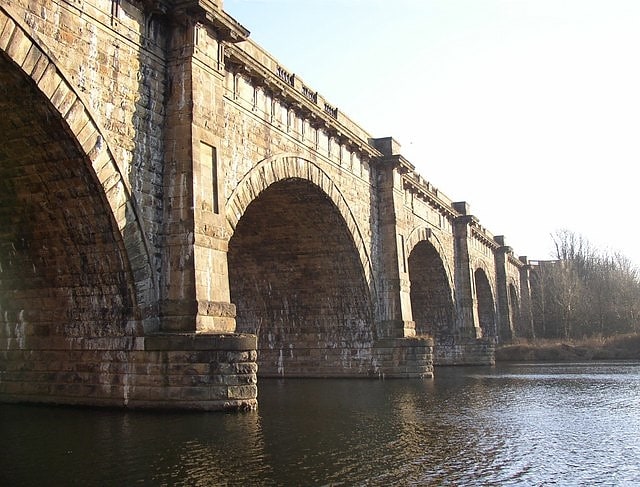
Navigable aqueduct in Lancaster, England. The Lune Aqueduct is a navigable aqueduct that carries the Lancaster Canal over the River Lune, on the east side of the city of Lancaster in Lancashire, England. It was completed in 1797 at a total cost of £48,320 18s 10d. It is a Grade I listed building.[8]
Address: Lancaster Canal, Lancaster
Lancaster Town Hall

City or town hall in Lancaster, England. Lancaster Town Hall is a municipal building in Dalton Square, Lancaster, Lancashire, England. It is a Grade II* listed building.[9]
Address: Dalton Square, Lancaster
The Dukes
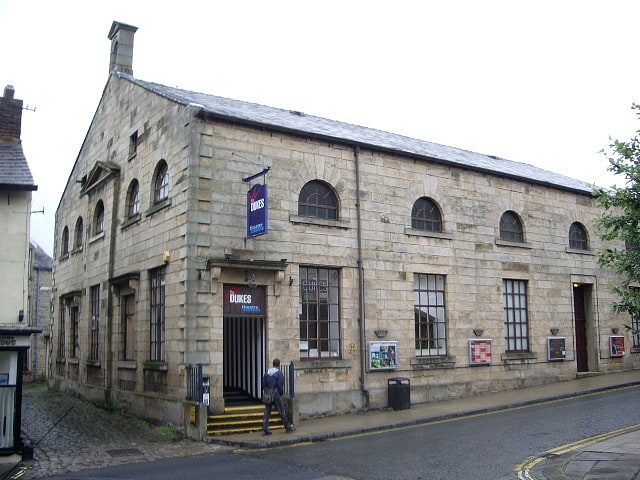
Theatre in Lancaster, England. The Dukes is a theatre in Lancaster, England. It is the county's only producing theatre venue, and is an Arts Council England National Portfolio Organisation. As well as producing two theatre productions each year, it also hosts a varied programme of touring theatre, comedy, live music and dance. It also has a reputation for screening independent cinema and in 2017 won Northern Soul's Cinema of the Year Award.[10]
Address: Moor Lane, LA1 1QE Lancaster
Grand Theatre
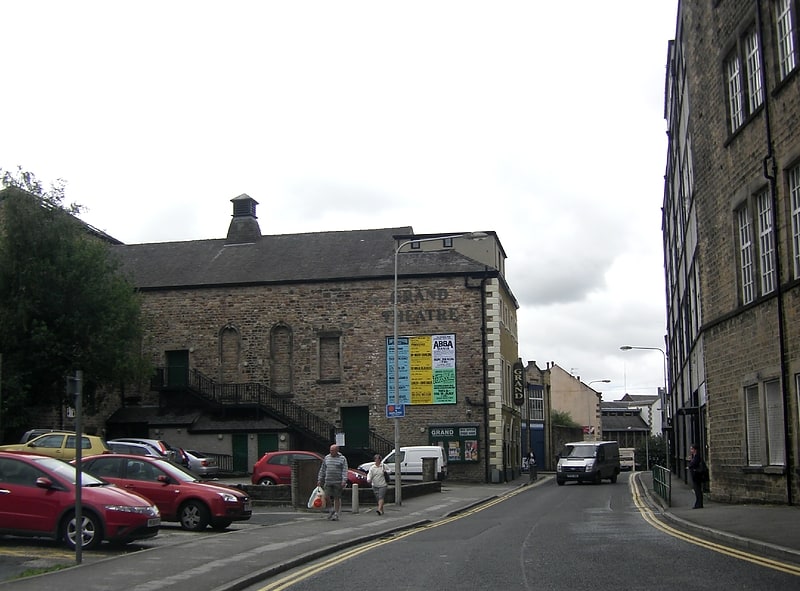
Theatre in Lancaster, England. The Grand Theatre in Lancaster, England is one of the oldest theatres in England and the third oldest in Britain, having been in near continuous use since 1782. Though it was seen numerous extensions and alterations, much of the original stone has survived. The theatre is recorded in the National Heritage List for England as a designated Grade II listed building.
Prior to its construction, theatrical performances were held in barns and inns in Lancaster as early as the 1760s. for example during the summer of 1777, the play The Orphan of China by Arthur Murphy was performed in one of these temporary theatres.
The theatre was built in 1781, becoming one of the first permanent theatres in Britain. The theatre was opened in June 1782, by Joseph Austin (an actor) and Charles Edward Whitlock (a dentist), who managed a circuit of theatres across the north of England. It was known simply as "The Theatre, Lancaster".
In that first summer, the plays Hamlet and The Belle's Stratagem were performed at the theatre, and received good reviews. In 1795, Macbeth was performed, and playing Lady Macbeth was Sarah Siddons, who was the sister-in-law of Whitlock. In September 1833 Italian violinist Niccolò Paganini played at the theatre. By the end of the 1830s, the theatre was less used for performances, and increasingly used for meetings of the Temperance society and for formal lectures. In 1843 Edmund Sharpe bought the theatre, and after an extension and alteration, he reopened it in 1849 as a music hall as well as a museum for the local Literary and Natural History Society. By 1860 it was owned and operated by a private company called the Lancaster Athenaeum, which Sharpe founded.
The theatre was closed in 1882. In May 1884 the theatre found a new owner, Henry Wilkinson, who had the building was altered, and it was re-opened as the Athenaeum Theatre. In 1897 the theatre was modified again, including a new stage, by architect Frank Matcham.
The work of Matcham was lost when the building was badly damaged by fire in 1908. With the interior rebuilt in the same year (the new design by architect Albert Winstanley), it re-opened as The Grand Theatre.
The Grand Theatre seats 457 on two levels. It is owned by the Lancaster Footlights who started performing in the 1920s and bought the Grand Theatre in 1951 to save it from demolition. The Grand Theatre plays host to amateur and professional shows. There are plans for a major building programme, "New spaces", to start in 2009: one extension will provide new reception, foyer and bar space and another will provide rehearsal space, workshop, costume department and scenery storage space.[11]
Address: Lancaster, St Leonardgate, Lancaster, LA1 1NL
Peter Scott Gallery
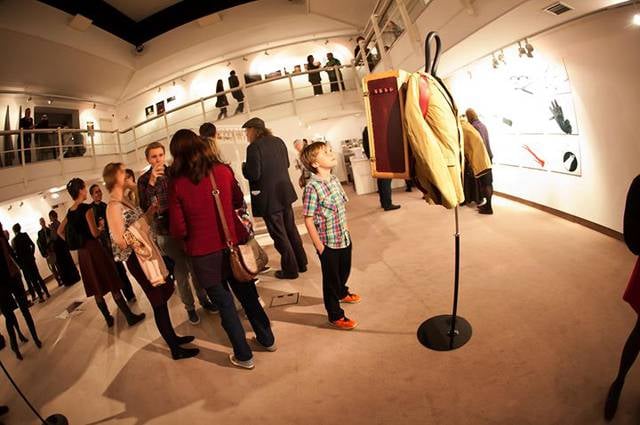
Art gallery in Bailrigg, England. Lancaster Arts at Lancaster University is Lancaster University's public arts organisation. The organisation presents performances, for the public, staff and students, through its campus venues the Nuffield Theatre, Lancaster Concerts Series and the Peter Scott Gallery.[12]
Address: University House Live at LICA, LA1 4YW Lancaster
St Paul's Church

Building in Lancaster, England. St Paul's Church is in Scotforth, a suburb of Lancaster, Lancashire, England. It is recorded in the National Heritage List for England as a designated Grade II listed building. It is an active Anglican parish church in the deanery of Lancaster, the archdeaconry of Lancaster and Morecambe, and the diocese of Blackburn. The architectural historian Nikolaus Pevsner described it as a "strange building" and "an anachronism, almost beyond belief".[13]
Lancaster University Chaplaincy Centre
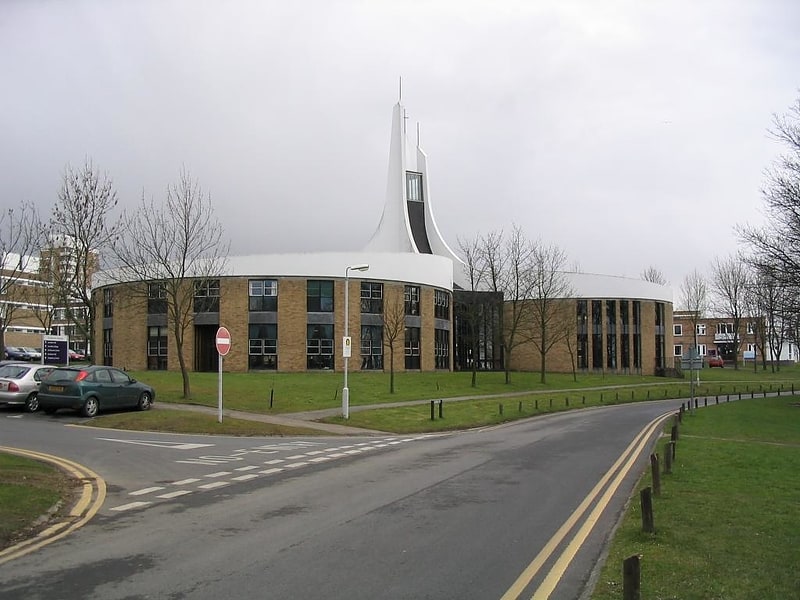
Lancaster University Chaplaincy Centre, on the campus of Lancaster University in the United Kingdom brings together the many faith groups represented on the campus and in the wider community.[14]
Address: Bowland Ave, LA1 4YW Lancaster
Lancaster City Museum

Museum in Lancaster, England. Lancaster City Museum is a museum in Lancaster, Lancashire, England. It is housed in the former Lancaster Town Hall building in Market Square.[15]
Address: Market St, LA1 1HT Lancaster
St John's

Anglican church in Lancaster, England. St John the Evangelist's Church is a redundant Anglican church in North Road, Lancaster, Lancashire, England. It is recorded in the National Heritage List for England as a designated Grade II* listed building, and is under the care of the Churches Conservation Trust.[16]
Address: North Road, Lancaster
Lancaster Roman Fort
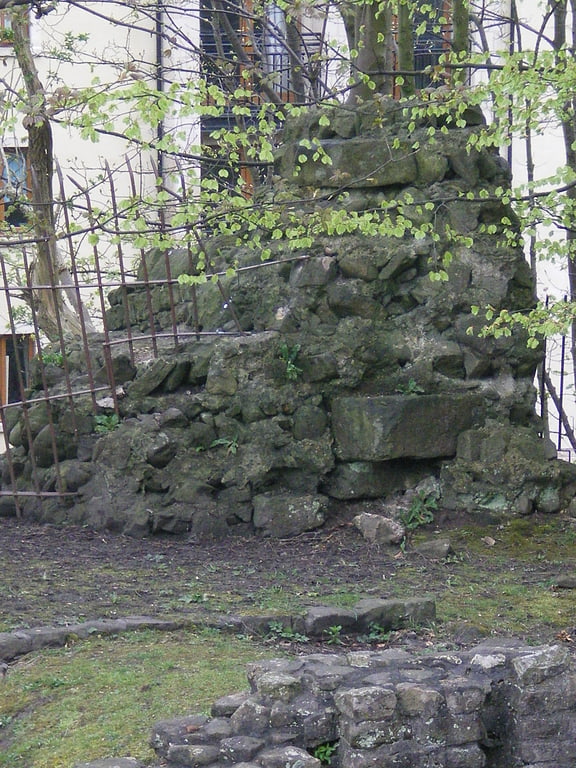
Lancaster Roman Fort, also known as Wery Wall, Galacum or Calunium, is the modern name given to ruined former Roman fort atop Castle Hill in Lancaster in North West England. The first castra was founded c. 80 AD within the Roman province of Britannia.
The fort's name is not known. A Roman milestone found four miles outside Lancaster, with an inscription ending L MP IIII, meaning "from L— 4 miles", suggests that it began with that letter. However in 1998 David Shotter suggested that Galacum, a name that has been associated with the fort at Over Burrow, would be more appropriately applied to Lancaster.
The fort is thought to be the origin of the name Lancaster. It appears in the Domesday Book as Loncastre, where "Lon" refers to the River Lune, with the Old English cæster (borrowed from the Latin castrum) for "fort".[17]
Christ Church
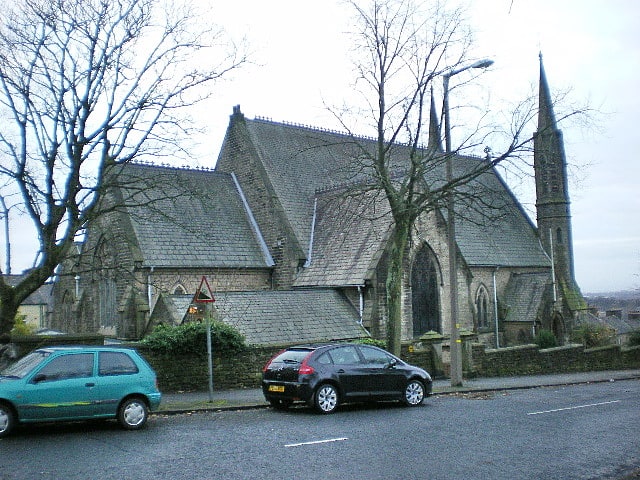
Church in Lancaster, England. Christ Church is in Wyresdale Road, Lancaster, Lancashire, England. It is an active Anglican parish church in the deanery of Lancaster and Morecambe, the archdeaconry of Lancaster, and the diocese of Blackburn. The church is recorded in the National Heritage List for England as a designated Grade II listed building.[18]
Address: Wyresdale Rd, LA1 3EA Lancaster
The Ruskin - Library and Museum
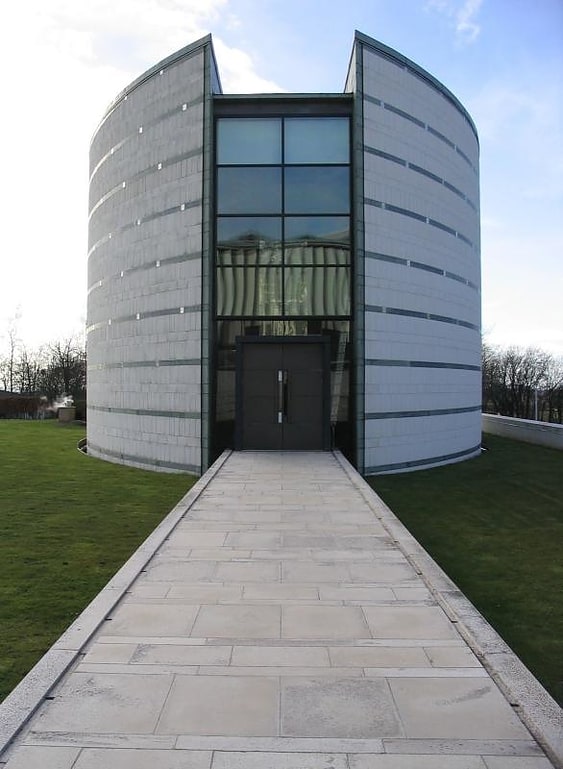
Library in Bailrigg, England. The Ruskin - Library, Museum and Research Centre is an archive, university museum and research centre at University of Lancaster, in the north of England.
The Ruskin is home to The Ruskin Whitehouse Collection, the world's largest assemblage of works by artist, writer, environmentalist and social thinker John Ruskin (1819–1900), and his circle. The collection is on display in The Ruskin, the iconic museum at Lancaster University designed for the collection by Sir Richard MacCormac, and Brantwood, Ruskin's house, garden and estate on Coniston Water.
Prior to 2019, The Ruskin - Library, Museum and Research Centre was known as the Ruskin Library.
In 2019, the Collection was purchased by University of Lancaster, with support from the National Heritage Memorial Fund. The Ruskin launched on 26 September 2019 with the exhibition, ‘Ruskin: Museum of the Near Future’, to mark the bicentenary of Ruskin's birth in 1819.
In 2021, Lancaster University announced that The Ruskin would close to enable planned capital works to take place. During the temporary closure, The Ruskin's programmes of exhibitions, events, research and learning are taking place digitally and off-site.
The Ruskin is an Accredited Museum.
The Director of The Ruskin is Professor Sandra Kemp.[19]
Address: Lancaster University, LA1 4YH Lancaster
Greyhound Bridge
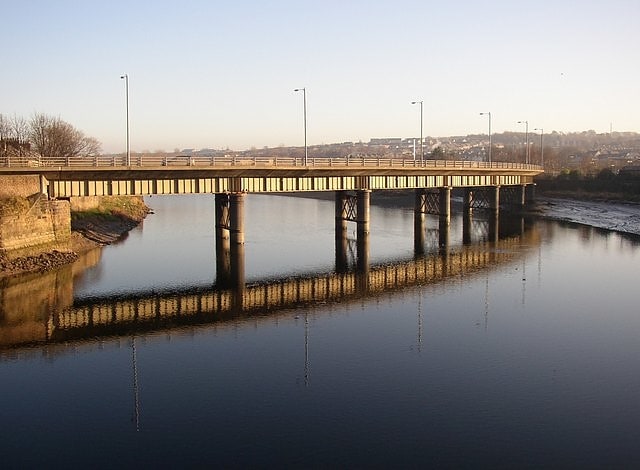
Bridge in Lancaster, England. The Greyhound Bridge is a road-connection spanning the River Lune as it runs through Lancaster, England. It serves as the primary route northwards, on account of a one-way system that directs all southbound traffic over Skerton Bridge. Originally built to carry a railway, it is the third bridge to stand on the present site and lies between the Lune Millennium Bridge and Skerton Bridge.[20]